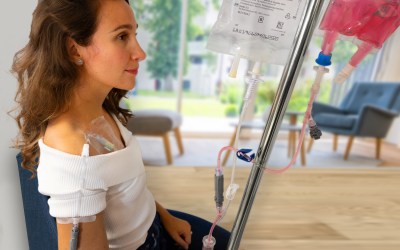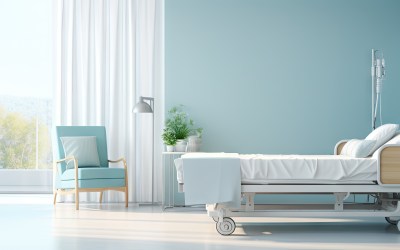The PERSEUS guidelines, recently released by the European Society of Anaesthesiology and Intensive Care (ESAIC), recommend a global use of ultrasound to assist all steps of central venous...
A platform for clinicians to share and increase knowledge about topical, innovative issues in Vascular Access & Infusion Therapies with the aim of ensuring safe patient-centered IV practices.
VascuFirst is a Vygon initiative.
Ultrasound in the placement of PICCs and midlines
As the GAVeCeLT group (1) stated in their manual on PICCs and midlines regarding the evolution of PICC use, the introduction of ultrasound in the 2000s has been a breakthrough in the field. In this...
Using Closed Safety Systems for Administration (CSSAs) to Reduce Risks of Occupational Exposure to Hazardous Medical Products (HMPs)
Healthcare professionals handling chemotherapy for preparation and administration of HMPs are likely to be exposed to potential contamination risks associated with cytotoxic drugs. These risks can...
Introduction of ECG tip location into practice: A testimonial of Nicola Wyllie
This article discusses the implementation of electrocardiogram tip location (ECG TLS) for the confirmation of central venous catheter tip position. The author works within a nurse led vascular...
How is Vascular Access viewed and managed in France ? – An interview with Christian Dupont
Have you ever wondered how nursing works outside of your country? What protocols are used, how is the coordination between professionals, and how is patient follow-up conducted? Christian Dupont is...
“Right line at the right time”- a District General Hospitals perspective on the introduction of a nurse led midline service
Acute Cardiac Care Unit, Crosshouse Hospital, NHS Ayrshire & Arran, Scotland Within cardiology, there is a cohort of patients who require prolonged IV access, such as those with...
Everything you need to know about tunnelling in midlines
In ultrasound-guided procedures, it is possible that an ideal vein isn't found in the optimal catheter exit zone. When confronted with the decision between "immediate placement of a line out of...
Specificities of central venous access in paediatrics
A testimonial of Dr Eric Desruennes There aren't many differences between children over 2 years and adults. On the other hand, newborns, infants, and children under 2 years are quite...
Addressing Pain During Neonatal PICC Placement
In neonatal care, the delicate nature of patients demands meticulous attention to every aspect of their well-being. The placement of a peripherally inserted central catheter (PICC) in neonates,...
Ensuring optimal care for DIVA patients
The VAD (vascular access device) insertion experience varies between patients. For individuals with difficult intravenous access (DIVA), the process can become traumatic and notably painful....
SIP-2 Protocol: Making PICC Insertions Easier
In modern healthcare, multiple professionals are responsible of inserting vascular access devices in patients. Within the same hospital, different categories of professionals end up using the same...
Key good practice points to help prevent totally implanted vascular access device occlusion
One of the most common complications associated with vascular access devices (VAD) is occlusion. Device occlusion can potentially result in treatment being either halted or missed. This can have a...











